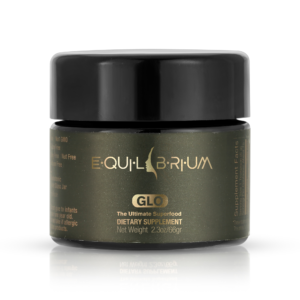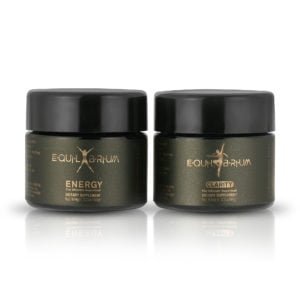Americans are facing the same questions about food security that led to a nationwide boom in Victory Gardens during World War II. This dovetails with growing concern around the safety of the chemicals and methods used in conventional food cultivation. There has never been a better time to embrace the “grow your own” food movement by planting a garden at home.
Seasoned gardeners and novices share a common goal: providing nutrient-dense fruit and vegetables. Narrowing the focus to cultivating superfoods is a great starting point. “Superfood” is the nickname given to healthy foods known for their high levels of antioxidants and nutrients. Here’s a basic guide on how to grow a superfood victory garden, taking into consideration your climate and available growing space.
Which “Superfoods” Should You Grow at Home?
Homegrown fruits and vegetables are almost all superfoods – higher in minerals and nutrients than their conventionally grown supermarket cousins. But amongst the nutrient-dense superstars, there are plenty of varieties you can grow at home, including:
- Beans
- Beets
- Berries
- Broccoli
- Garlic
- Ginger
- Kale
- Shiitake mushrooms
- Sweet potatoes
- Tomatoes
- Walnuts
“There’s nothing like the taste of a homegrown, vine-ripened tomato,” states Dr. David Kroska, a Minnesota plant reproductive specialist and avid tomato cultivator. He adds, “The tomato that you get out of your backyard is actually much better for you. Compared to store-bought, they have twice as much quercetin and kaempferol, 30 percent more vitamin C, 62 percent more calcium, and infinitely greater flavor!”
Dr. Kroska encourages cooking tomatoes with oil, which increases the amount of available lycopene by 50 percent. Lycopene is the antioxidant that gives tomatoes their color and confers huge health benefits such as improved heart health and a lower risk of certain types of cancer.
The bottom line is that most homegrown fruits and vegetables are “superfoods.” For success, grow varieties that are well-suited to your region and your personal tastes in your family garden.
Understanding Your Zone
The U.S. is divided into growing zones based on the average annual minimum winter temperature. Find your plant hardiness zone on the USDA zone map and use this as a guide when selecting plants and determining when to plant. The most critical aspect of growing zones is the last frost date. This date dictates when to sow seeds indoors and transplant outdoors. Zone planting charts provide a roadmap for when to sow, plant, and harvest.
Superfood plants such as berries come in many different varieties suited to different climates and regions. Kale and leafy greens prefer cooler weather, while tomatoes and peppers like it hot. Choosing appropriate plant species and planting them at the right time will ensure the success of your superfood garden.
Sourcing And Starting Seeds
Growing healthy food starts with choosing high-quality seeds and plants. Organic and heirloom seeds increase biodiversity and yield sustainable food. Buy your seeds and plants from a small-scale, reputable seed company that doesn’t source from multinational companies. Unlike GMO (genetically modified organism) and hybrid varieties, you can collect heirloom seeds from your plants season after season. Buying your produce from a grocer limits you to a small number of varieties selected for their ability to withstand shipping. Homegrown harvests often surprise gardeners with their depth and richness of flavor.
Despite being as old as civilization, sprouting plants from seeds still has a lot of variables and challenges. Some folks swear by specialized lighting and heated mats, but others rely on sunny windowsills and old yogurt containers. Choose a method appropriate to your climate and available resources.
You can start plants such as eggplant, peppers, tomatoes, and herbs indoors in early spring or late winter. Sow seeds indoors based on a planting chart for your zone. The key ingredients for successful seed starting are consistent soil moisture and good timing. Use a growing medium designed for seedlings — it should be light-textured and good at retaining moisture. Freshly sprouted plants need to be kept moist (but not wet) and need a consistent light source. Plants such as beans, cucumbers, melons, peas, and squash perform best when sown directly in the ground.
Saving seeds from your garden is an excellent way to secure a continuous supply of your favorite fruits and vegetables. Planting open-pollinated heirlooms (as opposed to hybrid varieties) will ensure true-to-type seeds. Start with easy varieties such as beans, lettuce, peas, and tomatoes for an easy seed-saving win. Save seeds from only your favorite and best-performing plants. Label your seeds well and store them in a cool, dry place to plant the following season.
Garden Location
Large yards with different areas available for gardening are ideal for a victory garden. But with a little creativity, a family garden can be cultivated anywhere. Even a small yard, patio, or balcony with adequate sunlight can provide the means for a productive garden.
The best spot for a garden is a location with southern exposure. When growing in a constrained area, such as a patio, you’ll want to maximize the vertical space. Berry canes can be trained to grow up a trellis, and blueberry bushes make outstanding container crops. At ground level, kale, leafy greens, and strawberries are a productive use of space. Containers work well for growing most superfood crops such as peppers, tomatoes, beans, and peas.
Areas that receive morning sun are prime real estate for a family garden. A sunny chainlink fence line can double as a trellis, and a sunny flower bed can be repurposed for vegetables. Raised beds are ideal because you can move them to any sunny section of the yard. Even partly shaded areas will work for mint, lettuce, and other leafy greens.
Planning And Preparation
The best victory garden is the one that provides the most food possible. Great yields don’t just happen — they are the result of careful planning. Find a growing style that works for you.
You can maximize yields with square foot gardening or the biointensive method. You can also extend your harvest season by planting early, mid, and late-maturing varieties of the same vegetable.
No matter which style or growing method you choose, use companion planting to increase your yields. Planting basil next to your peppers will keep aphids from chomping on your peppers. If you plant corn next to your green beans, the beans will climb up the cornstalks and save you the trouble of building a trellis. Companion planting is one of the seven pillars of the biointensive growing method. It results in stronger, higher-yielding plants.
Next, practice organic fertilization and pest control. Using amendments such as compost, fish emulsion, and seaweed contribute to soil health and structure. You can grow sustainable food in your family garden by feeding the soil rather than the plants. Chemical fertilizers do nothing for the soil, while organic amendments work on an ongoing basis. Organic pest control methods keep your garden (and soil) healthy and chemical-free.
Attracting Pollinators
Fruits and vegetables can’t grow without pollination. Planting native flowering plants near your garden is a fantastic way to attract pollinators. You can also plant many herbs and flowers alongside your fruit and vegetables to lure butterflies and bees. Basil, fennel, mint, and thyme are all culinary herbs that attract bees if you allow them to flower. By providing forage for pollinators, you support biodiversity. They return the favor by increasing your garden’s productivity.
Extending Your Superfood Garden Season
Growing a victory garden in areas with a short growing season can feel like a lot of work for little reward. Cold frames are easy to make and help gardeners get a jump on the growing season. Low tunnels can cover raised beds or rows to protect plants from the cold.
Another solution? Preserve your harvest so you can use it year-round. Pickling, storing, freezing, drying, canning, and fermenting have extended harvests for centuries. Just as cooking increases lycopene levels in tomatoes, fermentation can increase the nutritional value of produce. Self-described “fermentation revivalist” Sandor Katz explains his first foray into the practice.
“When I moved to Tennessee in 1993, I tended my first garden. I was naively unaware that entire crops would be ready at the same time!” Faced with a huge cabbage harvest, he figured out how to make sauerkraut. He describes fermentation as a living food packed with beneficial microbes and adds, “Fermentation is a very effective way to preserve vegetables through a few seasons.” Not only does fermentation make a harvest last longer, but it may also add health benefits, too. Fermentation boosts both the levels of B vitamins and anti-carcinogenic agents in foods. It also makes nutrients more available and aids in digestion.
Cultivating a superfood victory garden is about more than food security. Homegrown produce is healthier and more nutritious than store-bought food. Growing your own sustainable food supply is fulfilling, fun, and delicious.

Francesca Singer holds both a degree in landscape architecture from Ball State University and a student award from the American Society of Landscape Architects. After running an Austin-Texas based design-build firm focused on sustainable and edible landscapes, she transitioned to organic farming. She now lives in southern France where she gardens extensively and writes about landscape gardening and food cultivation.
Submit your story or essay to Buzzworthy Blogs.
-
 Equilibrium Glo Adaptogenic Beauty Superfood$59.45 – $330.50 — or subscribe and save 10%Rated 4.00 out of 5 based on 1 customer rating
Equilibrium Glo Adaptogenic Beauty Superfood$59.45 – $330.50 — or subscribe and save 10%Rated 4.00 out of 5 based on 1 customer rating -
Sale Product on sale
 Equilibrium Energy And Clarity Superfood Bundle
Equilibrium Energy And Clarity Superfood Bundle$118.65Original price was: $118.65.$114.25Current price is: $114.25. — or subscribe and save 5%



